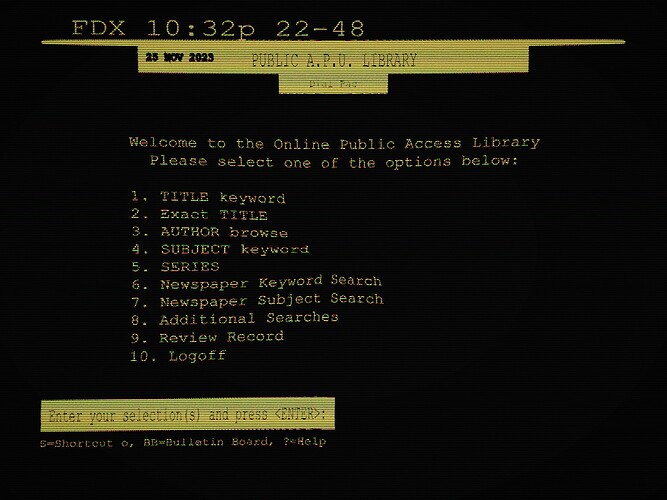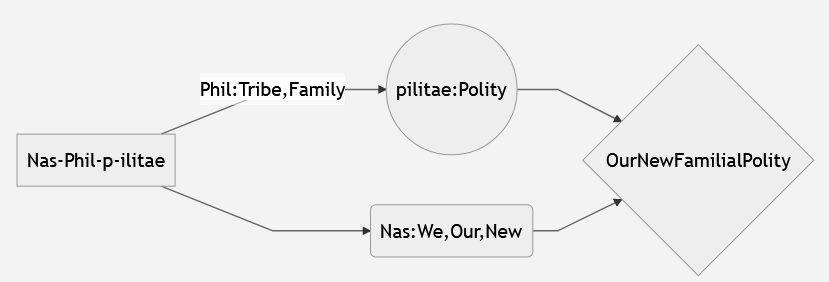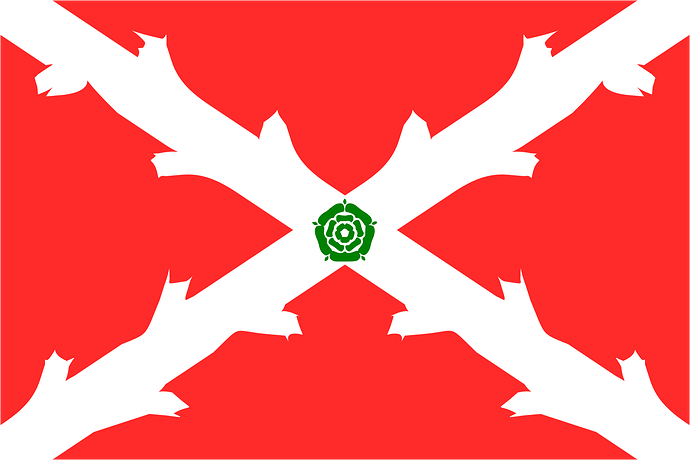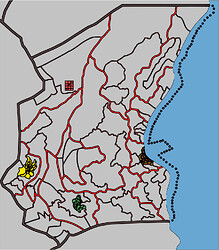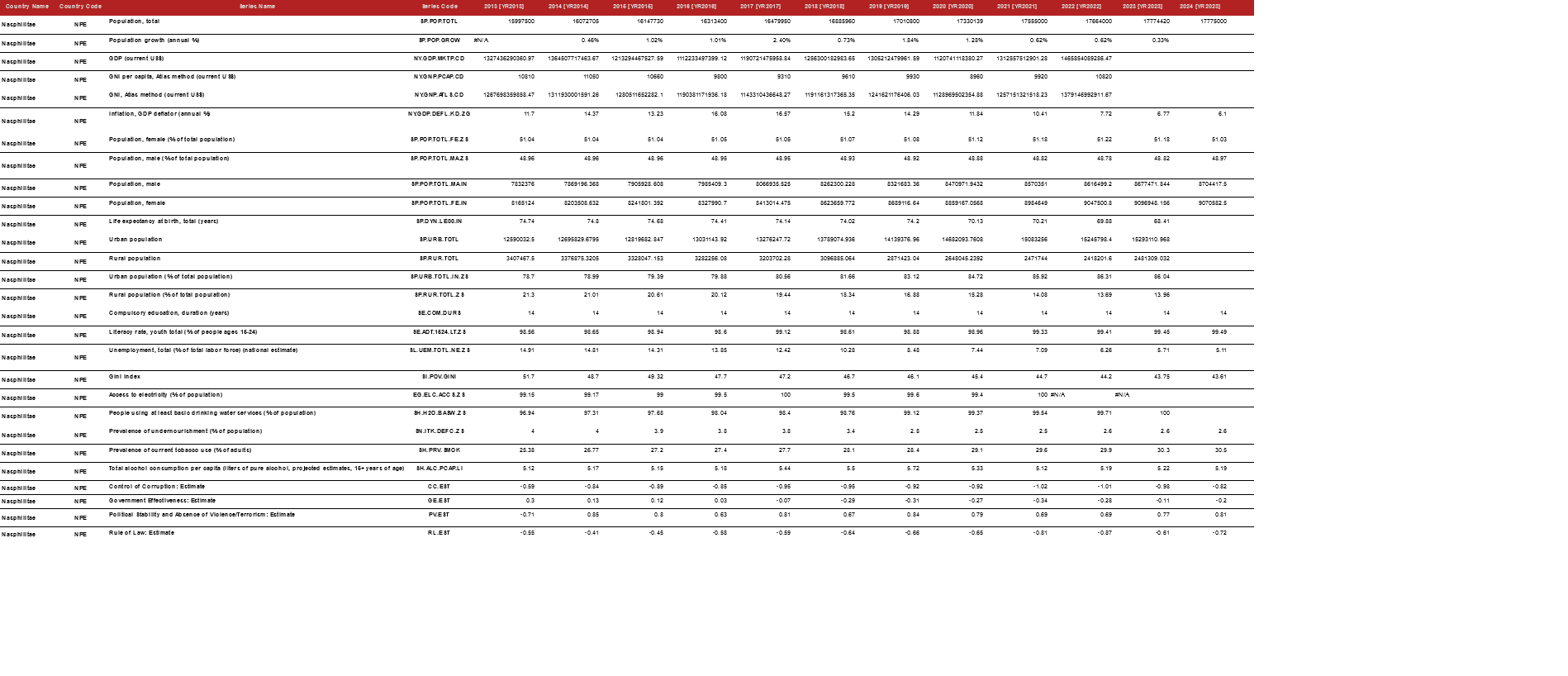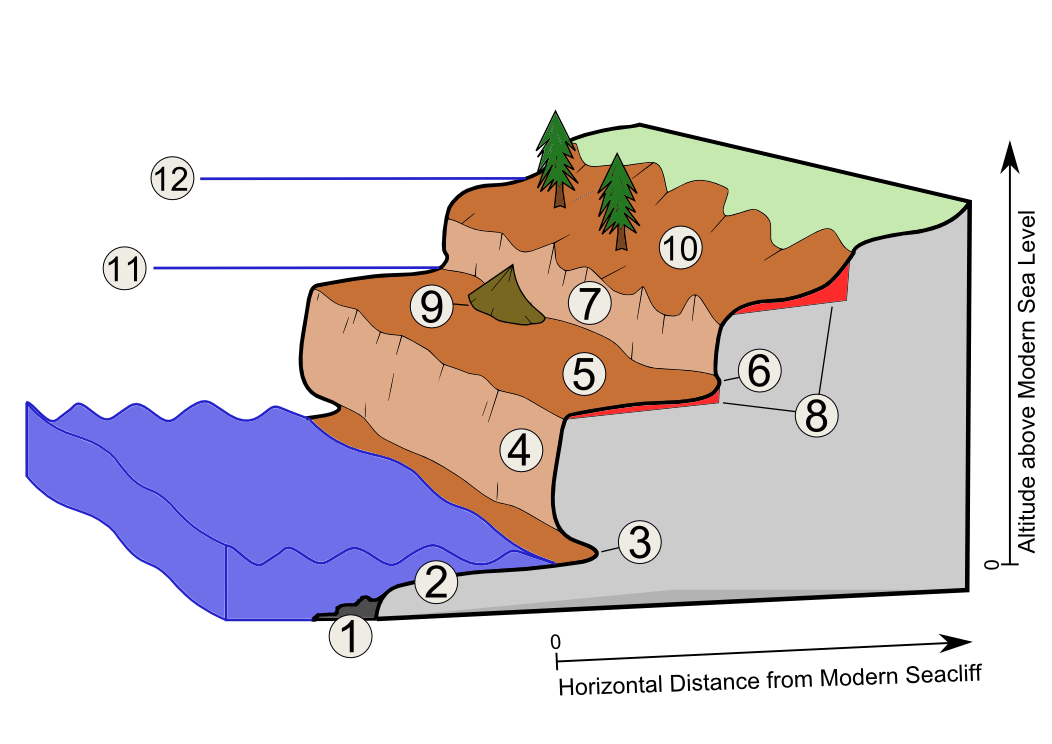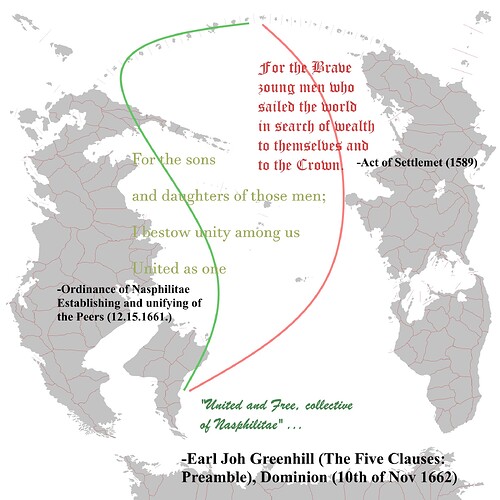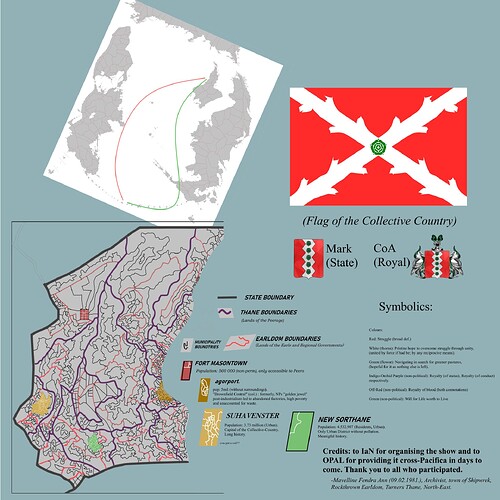Containment Act on Rules, Protocols, Procedures and Regulations of Public Offices
Independent Agency for Documentation (IAD): Department of OPAL
Category: Act of The National Parliament
Head-Director of IAD: Ayala Moran
Dispositive: Chapter I regulates the Public Offices and holders in relation to the National Parliament. Chapter II regulates the operating of the Parliamentary Houses and MPs. Chapter III covers confidentiality, judicial relations, details petition protocols, as well as introducing IAD and the RAFI. Chapter IV is a list of appended Annex which were imperative for the Bill to pass; It details the Legislative Procedure and requirements for Bills to be passed on basis of origin of that Bills proposal. Additional obstructions included changes to independent MPs and question of MP mandates in relation to the political party in Chapter II, Section 2, Rules 7-10.
Quick Links:
1. Rules of Procedure
2. Constituent Assemblies, Agenda and Timetable of Conventions, Conduct of Sittings, Maintenance of Order
3. Implementations of The Plenary Committee, Public Engagement, Third Branch Independence and External Information
4. APPENDIX: Annex Rules Regarding Legislative Procedure, Agenda and Voting of Bills
§ ¶ The National Parliament of Nasphilitae is the supreme executive and legislative branch authority in the Grand Duchy of Nasphilitae.
¶ The National Parliament of Nasphilitae is Bicameral and consists of the Upper House and the Lower House.
¶ The Upper House is comprised of 631 MP elected in their constituency on local elections following a FPTP system of choosing the victor.
¶ The Lower House is comprised of 225 MP elected using a two-round voting system on national elections following a mixed proportional quota, in which the two runner-up candidates proceed to the second round held 5 days after the first, after which the political party with the most votes is declared winner
¶ Leader of the winning party in National Elections assumes office the day after the second round; While inauguration of the executive Cabinet is held 7 days after his assumption of office.
§ ¶ The Speaker of The National Parliament and The Head of Government of Nasphilitae is the leader of the winning party which has the most seats in the Lower House.
¶ The HoG is tasked with forming an absolute majority of all MP in the Lower House and a relative majority in the Upper House upon election.
¶ The HoG is authorised with nomination of the executive Cabinet Offices upon assuming office and before inauguration of the executive Cabinet, nominees of which must be MP of the ruling parties.
¶ The HoG is authorised with dismissal of the executive Cabinet Officers only upon providing replacement, which must be MP of the same political party which held the Office prior to dismissal.
¶ The HoG coordinates work of the Cabinet Offices and is authorised with administrative tasks within the Cabinet.
§ ¶ Chairs of the Lower House and the Upper House of The National Parliament are nominated and elected on the first constituent sitting Assembly.
¶ Chair of the Lower House is nominated by the Head of the HM Shadow Government.
¶ Chair of the Upper House is nominated by The Representative of the Plenary Committee.
¶ Chairs of both Houses are tasked to act as administrative officials and are the only MP which are forbidden from behaving along political party lines.
¶ Further authorisations of the Chairs are regulated in Chapter 2.
§ ¶ Persistent with Section 2 Rules 3-5, Officers of the Executive Government are nominated and dismissed by the Head of Government.
¶ Each Officer is responsible for the sector they are nominated and may, upon consultation with the HoG, structure the administrative tasks of their sector freely, limited only by merit system and loyalty to the well-being of the collective interests of Nasphilitae.
¶ Accountability of each Officer within the collective Executive Government is individual.
¶ Accountability of each Officer, amplified in procedure of presenting legislative Bills, is held collectively.
¶ Dismissal of one Officer, when initiated by the MP’s of the Lower or the Upper House, initiates the dismissal of the collective Executive Government.
¶ Total number of the Executive Offices is 10 not including Office of the HoG, which is treated as an additional +1.
§ ¶ Head of the HM Shadow Government is the leader of the losing runner-up party as persistent with Chapter 1, Section 1, Rules 4 and 5.
¶ All Rules of the Head of the HM Shadow Government and the Heads of Parliamentary Committees are mirrored by rules of the HoG and the respective Executive Offices, mentioned in Chapter 1, Sections 1-4.
§ ¶ Representative of the Plenary Committee, including Heads of Commissions and Lead Directors of Working Groups, are selected by prrinciples of expertise and merit, after which a list of most competent candidates are elected in the Lower House, with non-binding relative majority approval from MP’s of the Upper House.
¶ Members of the Plenary Committee, when acting in the name of this Public Office, are forbidden from acting in accordance to political party lines.
¶ The Plenary Committee as a collective Public Office works in the name of the collective interests of Nasphilitae and its citizens.
§ ¶ Parliamentary Privilege includes legal immunity, exercised as grant of protection against civil or criminal liability during their service in The National Parliament.
¶ All MP’s are exempt from proceedings on the grounds of slander and contempt of court.
¶ Parliamentary Privilege is enjoyed only while on the territorial grounds of The National Parliament.
¶ MP’s which serve as Executive Officers are exempt from proceedings on the grounds of confidentiality breach only in communication with each other, the HoG, The Grand Duke and The Plenary Committee as a collective Public Office.
¶ MP’s which serve in the Shadow Government are exempt from proceedings on the grounds of confidentiality breach only in communication with each other, the Head of the HM Shadow Government, The Grand Duke and The Plenary Committee as a collective Public Office.
¶ Immunity from breach of confidentiality is enjoyed only while on the territorial grounds of the Offices in which the Executive Officers and the Parliamentary Committees operate.
¶ The Grand Duke, Head of HM Cabinet for Foreign Affairs, the Head General of the Armed Forces of Nasphilitae, and the Director of the Agency for Documentation and Identification may not be subject to active exercise of Parliamentary Privileges by the Elected Officials.
§ ¶ The Constituent Assembly is held 5 days after the Head of Government assumes office.
¶ The Constituent Assembly is obligatory attended by all elected MP’s of both Houses, absenting from it is punishable by dismissal of the mandate given on elections.
¶ The Constituent Assembly is the only Sitting in which both Houses are Convened & Adjourned simultaneously and the only Sitting in which the Presiding MP is the Speaker & Head of Government.
¶ The Constituent Assembly is tasked with nominating and electing all Public Offices mentioned in Chapter 1.
§ ¶ Sittings of the Lower House are Presided by Chair of the Lower House, which is tasked to Convene and Adjourn each Sitting, in accordance to Chapter 2, Sections 3 and 4.
¶ Sittings of the Upper House are Presided by Chair of the Upper House, which is tasked to Convene and Adjourn Each Sitting, in accordance to Chapter 2, Sections 3 and 4.
¶ Convention of each ordinary Sitting begins at 0900 AM.
¶ Adjourning of each ordinary Sitting, unless otherwise decided by qualified (Chair initiated and without 3/5 objection of present MP’s) majority, is to be announced at 0500 PM and end by 0600 PM.
§ ¶ The Executive Office, HM’s Shadow Government and The Plenary Committee, as collective bodies, are tasked with informing Chairs of both Houses on legislation which they seek to pass at least 48 hours ahead of time.
¶ The Chair of the Lower House is to prepare and present Agendas of Sittings each Saturday and Sunday, informing all MP’s of its contents 24 hours before the ordinary Sittings are Convened, which is every Monday, Tuesday and Wednesday.
¶ The Chair of the Upper House is to prepare and present Agendas of Sittings each Sunday and Wednesday, informing all MP’s of its contents 24 hours before the ordinary Sittings are Convened, which is every Thursday, Friday and Saturday.
¶ If no Agenda is received, the Sitting may construct an Agenda which is suggested by present MP’s in consultation with the respective Presiding Chair.
§ ¶ Sittings in which a Bill is discussed, which is to say in which an Agenda was received, follow a reading of the final draft Bill, after which MP’s are given 3 hours to discuss the substantive contents of the draft, before Parliamentary Chamber meetings of each Party is held time for which is 2 hours, after which results from those meetings are presented.
¶ Presentations of each Party must not exceed 10 minutes.
¶ Presentations which do not include amendments to the Bill are considered to be non-objectifying presentations, after which a Voting must be held.
¶ Presentations which include amendments to the Bill are considered objectifying, in which case the Party which presented the initial Bill and the Party which presented the amended Bill are given an additional hour of discussion, in replies whose lengths must not exceed 10 minutes, after which another Parliamentary Chamber meeting is held which lasts for an hour.
¶ After the final Parliamentary Chamber meeting, there is to be a preliminary Voting in which all opposing drafts are put to vote.
¶ The Chairs are tasked with maintaining order and respect of the respective House.
¶ Continuous (two-time) obstruction of the legislative procedure are to be sanctioned by the respective Presiding Chair in which the obstructing MP(s) are temporarily removed from the Meeting.
¶ Continuous (more than two Sittings) obstruction of the legislative procedure are to be sanctioned by the respective Presiding Chair in which the obstructing MP(s) memberships to The National Parliament, and any Public Office held, is permanently dismissed.
§ ¶ Preliminary voting, as elaborated in Section 4 Rules 4 and 5, lasts for 15 minutes.
¶ Preliminary voting exempts MP’s from their Party lines.
¶ Option with a relative majority of support from all present MP’s in Preliminary voting is considered the winning one and final voting is conducted henceforth.
¶ Final voting in the Lower House requires an absolute majority of approval from the total number of MP(s) in the Lower House to pass.
¶ Final voting in the Upper House requires an absolute majority of approval from all MP’s present in the Sitting of the Upper House to pass.
¶ MP’s in Final Voting are required to vote in accordance to their Party lines.
¶ Bills admitted in each House require approval from the other House before being enforced, rules of which are to be covered by law covered in Chapter 4.
¶ No MP may switch the Parliamentary Group of the political party on whose ballot they were elected
¶ An MP may leave the political party by which they were elected, gaining the status of an Independent MP.
¶ No MP may switch the Parliamentary Group of the political party on whose ballot they were elected, in favour of an opposing one.
§ ¶ (Removed and replaced in Chapter 1 Section 7).
§ ¶ The Plenary Committee as a collective body is tasked with Inquiry into breach of criminal law by Public Officials nominated or elected into office through The National Parliament.
¶ Records of The Plenary Committee regarding possible breach of criminal law are required to be passed to the Third Branch without delay.
¶ Records of The Plenary Committee regarding possible breach of criminal law are bound by confidentiality, access to which is enjoyed only by its members and employees in the Third Branch.
¶ False accusations with malicious, political intent, by the Plenary Committee members (not as a collective body) are liable to permanent dismissal from all Public Offices and prosecution from the Third Branch.
§ ¶ The Third Branch enjoys privilege of protection from all coercion by any other Public Office.
¶ The Third Branch enjoys the privilege of absolute self-administration of itself and its constituent institutions and employees.
¶ The Third Branch is tasked with employing its staff by strict rules of merit, as well as sanctioning of its staff and employees if any breach of Nasphiliti law is conducted by them.
¶ The Third Branch is tasked to cooperate with The Plenary Committee in matters relating to breach of criminal law by Public Officials.
¶ The Third Branch may begin prosecution of Public Officials by giving a notice of inquiry to The Plenary Committee, if it suspects a breach of criminal law has been conducted by a Public Official.
¶ Extraordinarily and with approval from the Head of State, the Third Branch may begin inquiry and prosecution if and only if it is believed that The Plenary Committee is associated to breach of criminal law in conjunction with another Public Office or by itself.
§ ¶ IAD of OPAL is tasked with documenting and archiving passed Laws and Regulations as well as any official documentation it deems worthy of public knowledge.
¶ Head-Director of IAD is nominated by rules of merit and expertise in law but not an active practitioner within The Third Branch.
§ ¶ The RAFI is to serve as replacement to the temporary body of T.M.C. in informing cross-Pacifica on matters relating to the Grand Duchy of Nasphilitae.
¶ Staff of The RAFI is to be determined by the Head of HM Cabinet for Foreign Affairs, including its constitutive administration, protocol and institutions.
¶ RAFI is to nominate a Head Reporter, which is to work in conjunction with the NAACN, in presenting brief information regarding the Grand Duchy of Nasphilitae.
¶ RAFI is prohibited from cross-communication with any member or any institution of the Agency for Identification & Documentation; Further prohibitions are to be regulated by Royal Law.
§ ¶ Initiative Petitions include a given percentage of the citizens of the Grand Duchy of Nasphilitae which may officially propose a law.
¶ Initiative Petitions may be passed to any Public Office, which upon being received, is required to inform the Chairs of the Houses and the Grand Duke.
¶ Initiative Petitions, upon being received by the Chairs of the Houses and the Grand Duke, are to be structured in a legislative form without changing the substantive nature of its contents.
¶ Records of the structuring and the initial Petition must be kept and presented on the Agenda together with the new form of the Petition.
¶ The Petition becomes a Bill upon being presented on the Agenda, which then follows the same protocol as any other Bill.
¶ Recalls include a given percentage of the citizens of the Grand Duchy of Nasphilitae which may call for the removal of a Public Official from Office.
¶ Recalls must be given to The Third Branch, The Representative of The Plenary Committee and to the Grand Duke.
¶ Recalls must be processed in accordance to rules of Chapter 2 Sections 2 and 3 within 72 hours of being received, upon which the same procedure follows.
¶ Referendum is hereby defined as: Popular vote regarding formal (legal) soundness of a proposed Bill.
¶ Referendum may be called by whomever proposes the Bill, results of which are non-binding.
¶ Plebiscite is hereby defined as: Popular vote regarding substantive nature of a proposed Bill.
¶ Plebiscites may be called by any Public Office, results of which are non-binding, and serve to gauge the public opinion regarding the given Bill.
ANNEX I: Procedure on Bills proposed by the Executive Offices (with or without amendments) are initiated in the Upper House, upon being admitted by the Upper House, require a relative majority in the Lower House, after which it is passed to the Head of Government for final admission of the Bill into Law.
ANNEX II: Procedure on Bills proposed by the Parliamentary Committees OR by the Shadow Government may be initiated in the Upper House or in the Lower House.
ANNEX III: If initiated in the Upper House, procedures regulated by Chapter 2 follow, and require absence of objection by 3/5 members in the Lower House, after which it is passed to the Head of Government which is obligated to admit the Bill into Law.
ANNEX IV: If initiated in the Lower House, procedures regulated by Chapter 2 follow; with addition that the Upper House may call for a re-negotiation of the same Bill if its passage failed in the Lower House, upon active insist of 3/5 members in the Upper House.
ANNEX V: Votes of all MP’s are recorded and documented, including on failed Bills, archived and passed by the Chairs of the Houses to the Peerage.
ANNEX VI: No Quorum is required for non-constitutive Sittings to be Convened or Adjourned; However, individual MP’s which fail to attend three consecutive weeks or a total of six weeks over the course of a year are subject to replacement by an MP of the same political party as the one being sanctioned.
Additional Information:
FIRST BILL DRAFT PROPOSAL DATE: 09.02.2024.
NUMBER OF DISMISSALS: 3
FINAL BILL PROPOSAL DATE: 11.02.2024.
FINAL VOTING (LOWER HOUSE): 219 6
FINAL VOTING (UPPER HOUSE): 589 42
DATE OF ACT SIGNED INTO LAW: 11.02.2024.
DATE OF BEING ENFORCEABLE: 12.02.2024.
